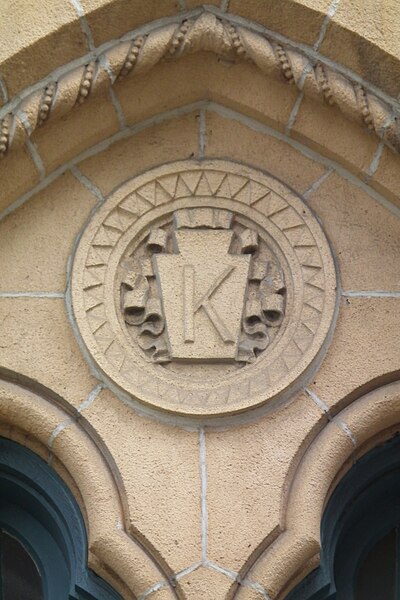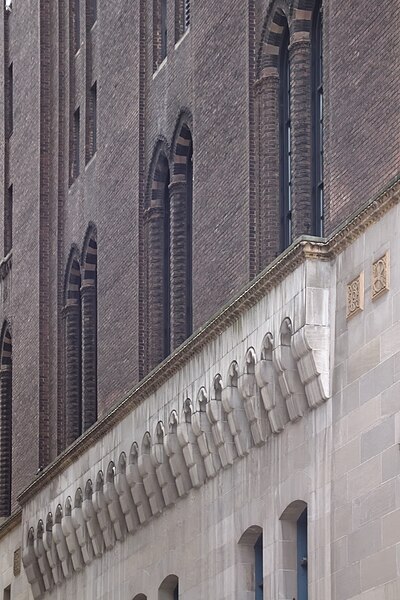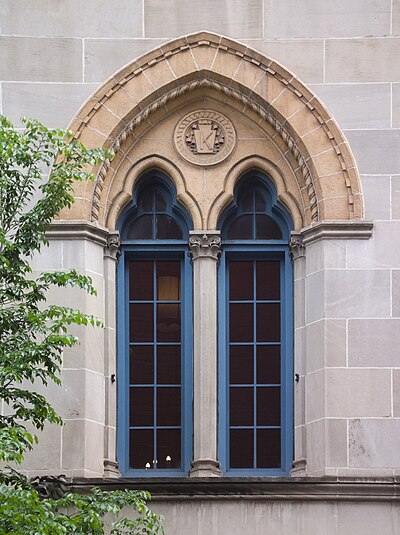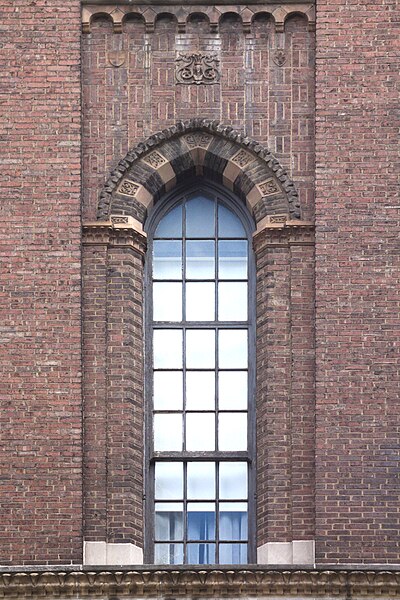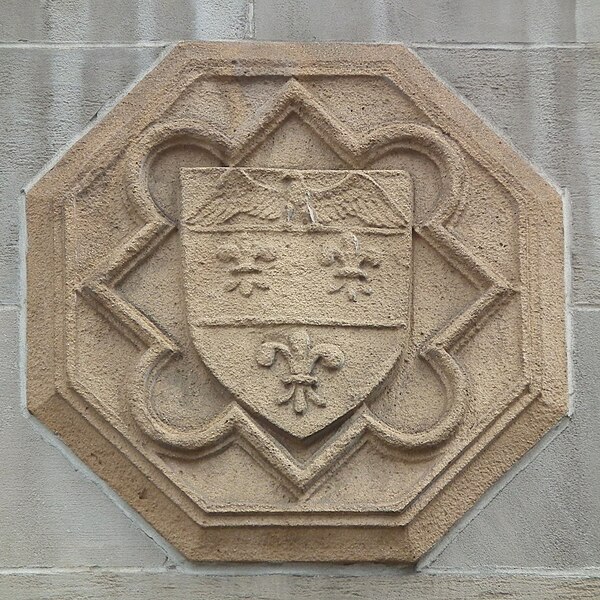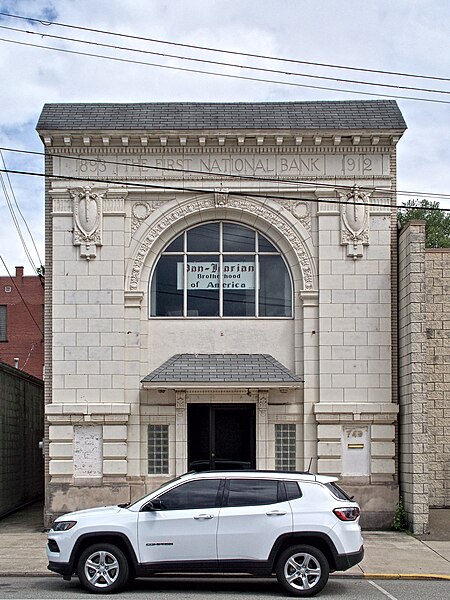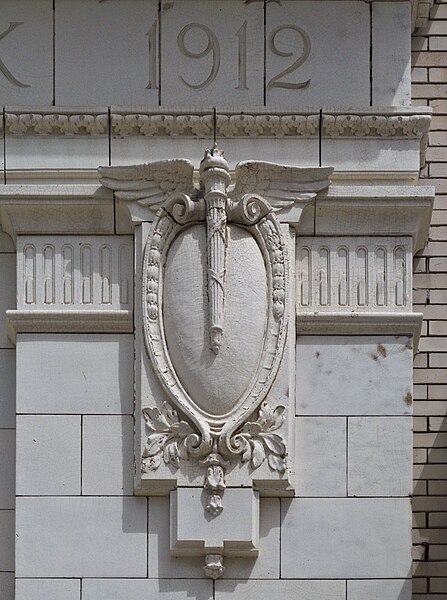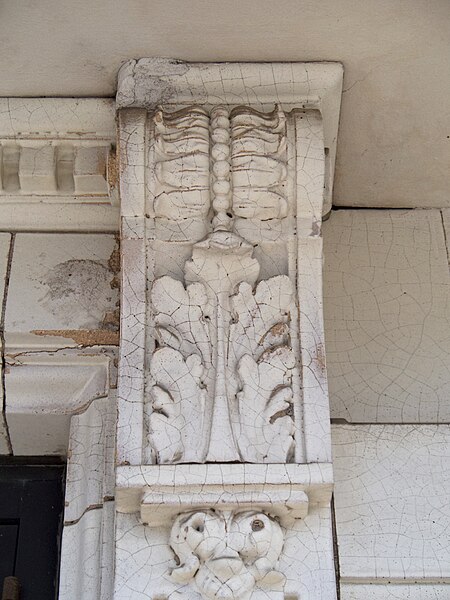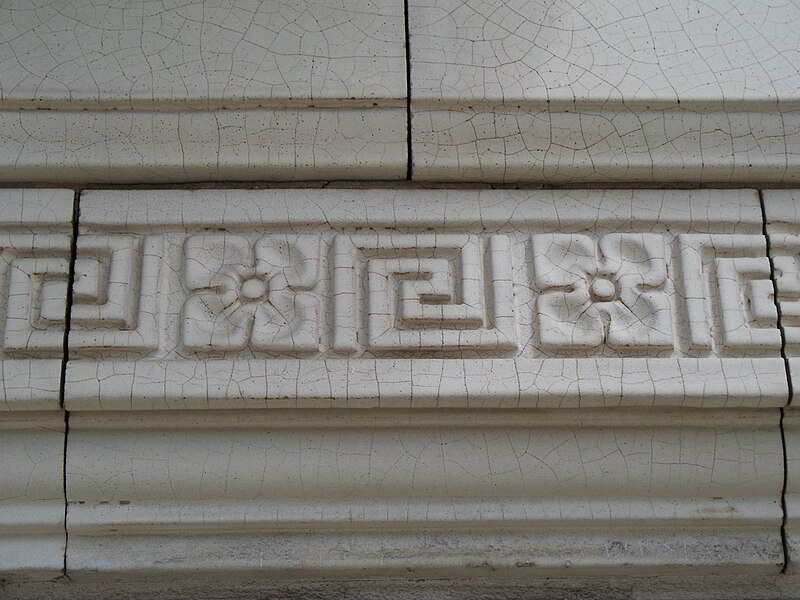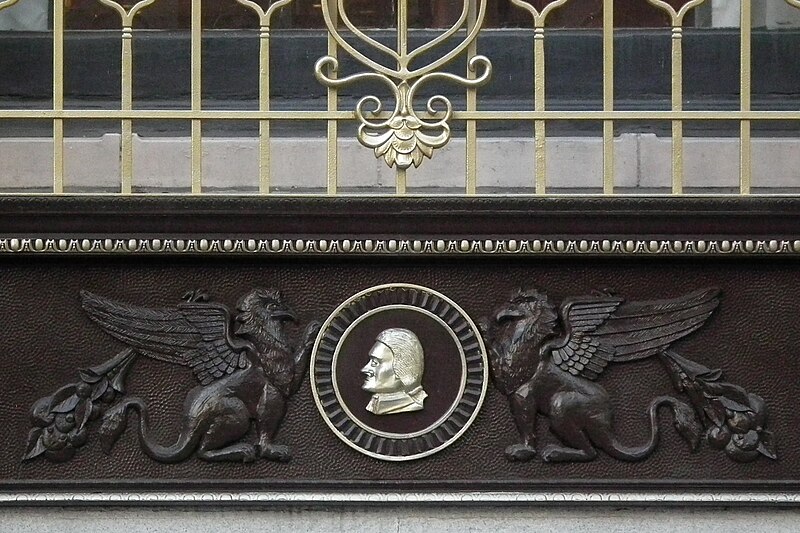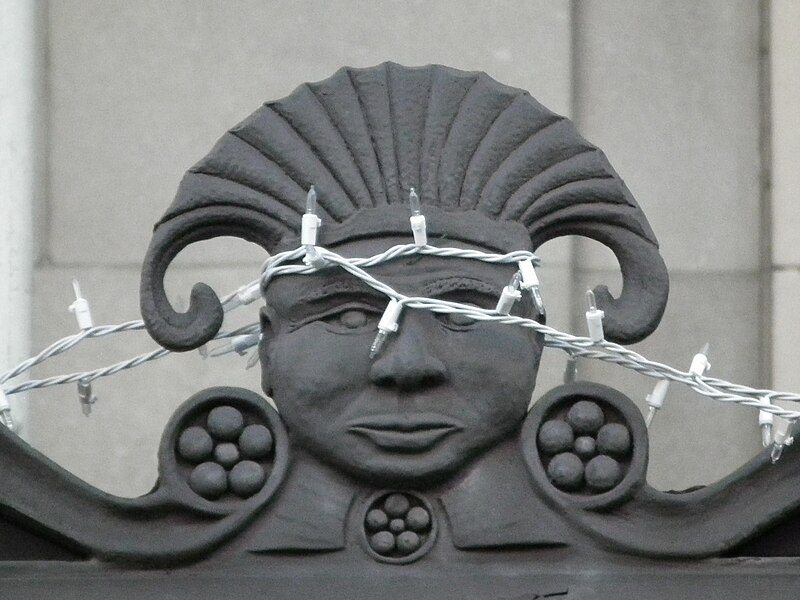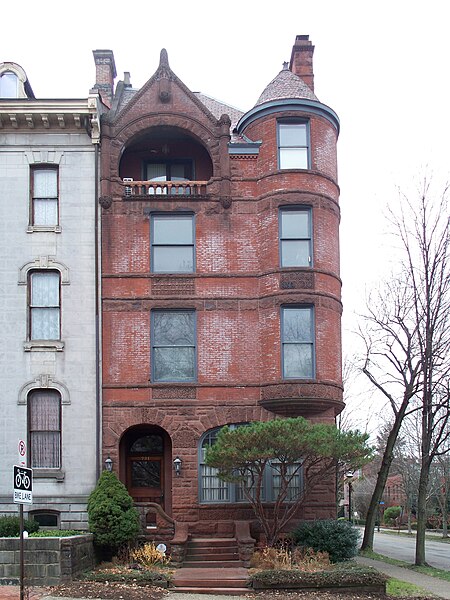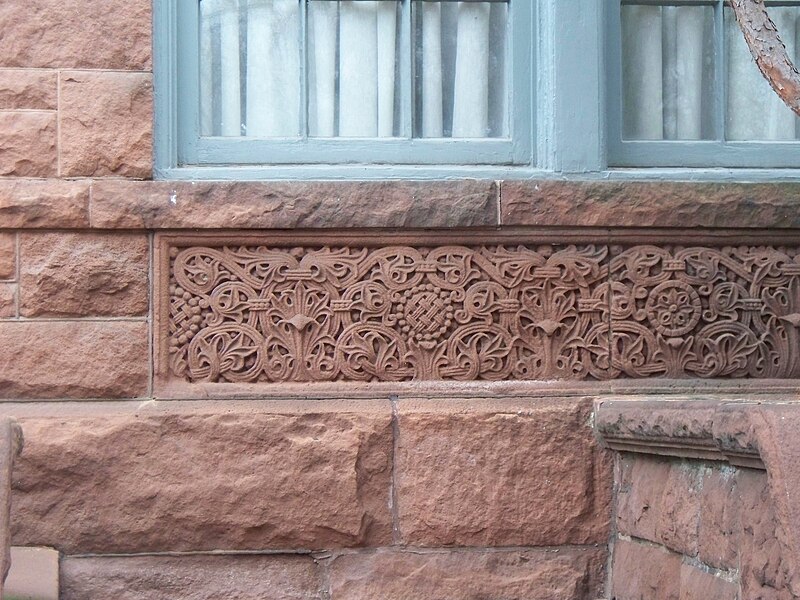
Still in use, with modern additions, as Crafton Elementary School, this Jacobean palace was built in 1913. The architect was Press C. Dowler, already well into a career that would last another half-century. His assignment here seems to have been to make up in spectacle for what the little borough’s high school lacked in size, and he came through with the goods, festooning the building with crenellations and terra-cotta ornamentation. But although the decoration may be a bit extravagant, it is done with good taste, making a balanced composition outlined by the sharp contrast between the red brick and the white trim.

The original school had two identical entrances—probably, as was common in those days, one for boys and one for girls.



















